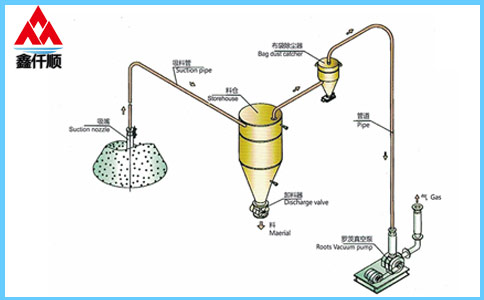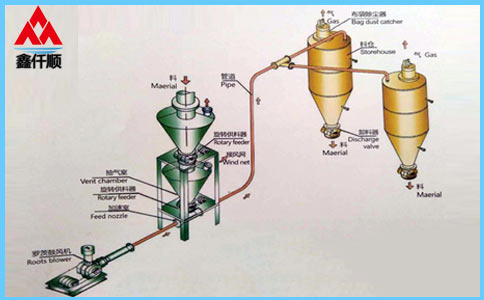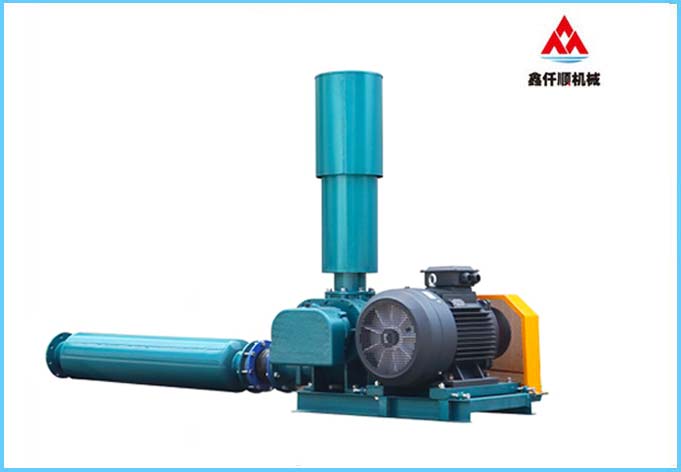The common Roots blower has not very high requirements for manufacturing technology, while the high-temperature Roots blower has higher requirements for manufacturing technology. The inlet temperature of the common Roots blower is generally 40 ℃, and the exhaust temperature varies with the pressure, but generally not higher than 140 ℃. If the outlet temperature is higher, cooling treatment is required. The high-temperature Roots blower will produce certain temperature during operation, and certain technical measures will be taken to ensure that the equipment parts are not damaged by high temperature.
Generally, we have sound insulation devices for Roots blowers. In summer, we must open the door of the sound insulation hood. The sound insulation cover forms a closed space, which increases the ambient temperature, resulting in higher temperature of the air inhaled and higher outlet temperature. Many Roots blowers equipped with sound insulation covers have inlet temperatures exceeding 45 degrees in summer.
If the fan is installed indoors. Conditional air conditioners can be installed. Don't worry about air conditioning and electricity. As the motor temperature rises by 10 degrees, the expected life is much lower. Therefore, indoor air conditioning can extend the service life of equipment and reduce the outlet temperature. Reducing the inlet and outlet pressure can help us reduce the temperature.
Reduce pipeline bending, etc., and minimize pipeline pressure loss and other pressure losses. In general, we can reduce the operating temperature of Roots blower by keeping the equipment ventilated normally, especially in summer when the Roots blower equipped with sound insulation equipment should properly open the sound insulation door, install air conditioning fans to reduce the ambient temperature, reduce the inlet and outlet pressure to help us reduce the temperature, reduce pipe bending, reduce the pipeline pressure loss and other pressure losses, Make roots blower operate under normal temperature environment, extend equipment service life and improve equipment operation efficiency.
1. Auxiliary cooling measures
The general roots blower has water cooling and air cooling. Air cooling can be used according to the technical requirements. If the temperature is high, water cooling is required. In order to ensure the normal use of the main and auxiliary oil tanks, cooling treatment is also required to reduce the temperature of the lubricating oil. The temperature of general lubricating oil shall not exceed 65 ℃.
In winter, it should also be noted that when the water-cooled Roots blower is not used for a long time in winter, the water in the cooling pipe should be drained to avoid freezing and cracking of the cooling pipe.
2. Impeller clearance design
During the design of Roots blower, the clearance between impellers will also affect the heat dissipation, such as the casing clearance, impeller clearance, wallboard clearance, etc. These are also the key points in the design. Some small manufacturers have short service life because of poor design.
The design of impeller clearance shall meet certain standards, and it shall also be checked during use. During the annual overhaul, the dust and dirt on the impeller shall be treated to ensure that the impeller clearance is within the standard error, and the clearance is not too small.
3. Strengthen protection for vulnerable parts
The lubricating oil is very easy to be damaged by the high temperature of Roots blower, so the cooling treatment of the lubricating oil needs to be protected in many ways. In addition to the application of water cooling, we also need to carry out other treatment. From the inside of the casing to the wallboard and then to the lubricating oil, the temperature should be reduced in order for cooling treatment.
Text label: Roots blower
Link to this article: //wuhanzhcs.com/html/news/n02/715.html










